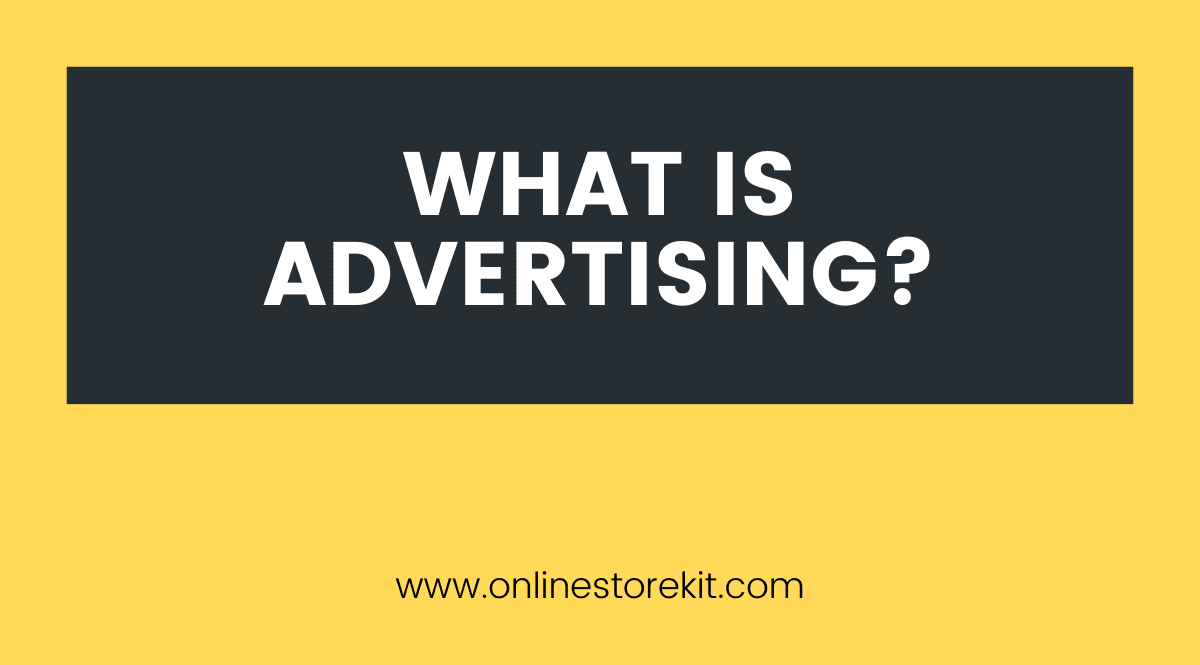The act of advertising has been likened to a symphony, with each element playing its own tune that combines into a beautiful melody.
Advertising is an art form, requiring creativity and skill to craft messages that will resonate with audiences.
This article aims to provide an overview of the definition of advertising, different types of advertising, advantages and disadvantages, best practices for successful campaigns, and legal regulations and guidelines.
Advertising at a Glance
Show- Advertising is a form of communication used to persuade an audience to take action.
- Traditional advertising involves the use of print media, television commercials, radio broadcasts, and billboards, while digital advertising utilizes digital channels such as websites, social media platforms, and search engines.
- Targeted advertising utilizes data points to reach specific audiences with tailored messages, offering improved targeting accuracy and better insights into consumer behavior.
- Advertising is crucial for businesses' marketing strategies as it helps increase brand awareness, drive sales and revenue growth, and can be optimized through strategies such as influencer marketing, micro-targeting, cross-platform promotion, and A/B testing.
Definition of Advertising: What is Advertising?
Advertising is a form of communication used to persuade an audience to take action. It utilizes creative strategies, such as visuals, audio, and language, to capture the attention of viewers or listeners.
This communication can be used in various mediums including television, radio, print media, and digital media.
The purpose is to create brand engagement that entices the target audience to purchase a product or service offered by the advertiser.
The definition of advertising has evolved over time with advances in technology and changes in cultural norms.
Today’s advertisements are often more sophisticated than those of yesteryear; they use clever tactics geared towards influencing consumer behavior through subtle manipulation techniques such as subliminal messaging.
Moreover, these messages can be tailored to specific audiences based on their demographics and psychographics for maximum impact.
Advertisers must also consider ethical considerations when constructing creative strategies for their campaigns.
Inappropriate content must be avoided; otherwise it could lead to a negative reaction from consumers which would ultimately damage the reputation of the company or advertiser involved.
Furthermore, advertisers should strive for accuracy when making claims about products or services so as not to mislead potential customers or cause any confusion regarding what they are being offered.
Different Types of Advertising
Advertising is a powerful form of communication used to inform, educate, and influence consumers.
There are three primary types of advertising: traditional ads, digital ads, and targeted ads.
Traditional ads are broadcast through television, radio, newspapers, and magazines.
Digital ads are created for the internet or other digital technologies.
Targeted ads reach specific target audiences based on their interests or locations.
Each type of ad offers unique advantages for businesses hoping to increase their visibility in the marketplace.
Traditional Ads
Traditional Ads, also known as ‘outbound’ marketing, commonly involve the use of print media, television commercials, radio broadcasts, and billboards.
It also involves utilizing a media mix with offline tactics such as direct mail campaigns and phone calls to target potential customers.
Traditional Ads are used to create brand awareness and drive sales.
They can be very effective in reaching a large audience quickly but can also be expensive for businesses depending on the type of ad chosen.
When done correctly, these types of ads can increase customer loyalty and generate more leads for businesses.
Furthermore, they provide an opportunity for companies to engage customers by creating unique messages that evoke emotion or encourage action.
Ultimately, traditional advertising is still an important part of any successful marketing strategy because it provides an effective way to reach both existing and potential customers.
Digital Ads
Digital Ads are a type of advertising that utilizes digital channels such as websites, social media platforms, and search engines to reach audiences.
This form of advertising is beneficial for businesses because it allows them to easily generate creative ideas to engage customers and measure success.
Some advantages of Digital Ads include:
- Ability to target specific audiences with tailored messages
- Cost efficiency in comparison to traditional forms of advertising
- Versatile across various digital channels
- Quickly trackable response from customers
- Easily scalable due to its digital nature
Digital Ads can be leveraged for businesses looking for effective marketing solutions and better ROI.
With the ability to target specific audiences with tailored messages, companies can maximize their reach and increase conversions.
Transitioning into the next section about ‘targeted ads’, this method is an even more precise way for advertisers to reach potential customers.
Targeted Ads
Targeted Ads are a form of digital advertising that utilizes data points to reach specific audiences with tailored messages.
Consumer profiling and data harvesting are key elements in this type of advertising.
Advertisers use the collected information to better understand their target audience, allowing them to create more effective ads that are likely to get a higher return on investment.
| Type | Benefits | Drawbacks |
|---|---|---|
| Consumer Profiling | Improved targeting accuracy More relevant messaging Increased ROI potential | Data privacy concerns Complicates ad optimization process Potential for misuse |
| Data Harvesting | Access to large amounts of data Enhanced targeting options Better insights into consumer behavior | Costly process Time consuming process Can be difficult to interpret results |
Targeted Ads allow marketers to tailor their message and deliver it only to those consumers who will find it most relevant, making it an efficient way for businesses to reach their desired audience without wasting resources.
Despite its potential benefits, targeted ads also come with some risks, as they may raise questions about data privacy and manipulation of user behaviour.
Advantages of Advertising
Advertising offers a range of advantages, such as increased visibility and improved brand recognition.
It allows businesses to reach out to potential customers in an affordable way, providing them with creative content that resonates with the target audience.
Other benefits of advertising include:
- Ability to customize messages for various demographics
- Opportunity to deliver targeted messages across different platforms
- Increased sales due to better understanding of customer needs
- Improved loyalty from existing customers by providing relevant information
- Opportunity to build trust and credibility through consistent messaging.
Advertising is an essential tool for any business looking to establish itself in the market.
Through strategic use of advertising, companies can maximize their reach, drive conversions, and cultivate relationships with potential customers, also apply the direct marketing method.
The right ad campaigns can help businesses gain more exposure, build trust with their target audiences, and ultimately increase profits over time.
Disadvantages of Advertising
Despite the various benefits of advertising, it is important to consider potential disadvantages as well.
Pricey campaigns can be costly for smaller businesses and the return on investment may not always match the cost.
False claims in advertisements can have legal repercussions, requiring companies to pay for fines or settle out of court.
Additionally, over-advertising can lead to consumer fatigue and ultimately hurt sales due to a decrease in viewership or engagement.
| Disadvantage | Description | Solution |
|---|---|---|
| Costly Campaigns | Advertising campaigns require significant financial investments that may exceed budget capabilities for small businesses | Use alternative platforms such as social media and guerilla marketing tactics instead of more expensive traditional methods |
| False Claims | Misleading advertisements can result in legal action against the company which could cause costly penalties or settlements | Ensure accuracy in all representations made by an advertisement before releasing it to the public domain |
| Consumer Fatigue | Too much advertising may cause consumers to become overwhelmed or disinterested which could potentially lead to lower sales numbers. | Balance out campaigns by using different types of content such as educational pieces between promotional ads and limit frequency of exposure accordingly. |
Despite these drawbacks, best practices for advertising exist that provide solutions and strategies for successful campaigns while minimizing any associated risks.
Best Practices for Advertising
Advertising is an important part of any business’s marketing strategy. There are a variety of effective strategies that can be employed to ensure success.
Developing an effective advertising campaign requires careful consideration of the targeted audience. This is necessary in order to create messaging that resonates with them.
It is also important to consider the most appropriate mediums for delivering these messages. This is done in order to maximize their effectiveness.
Effective Strategies
Successful advertising strategies often involve utilizing multiple media outlets in order to reach the widest audience possible.
This includes leveraging traditional platforms such as television and print, as well as digital tactics like social media, email campaigns, and even word of mouth.
Here are some effective strategies for advertisers:
- Utilize influencer marketing to tap into the power of celebrity endorsements
- Take advantage of micro-targeting tools on social media platforms to target specific audiences
- Use cross-platform promotion to maximize reach and engagement
- Employ A/B testing and analytics to optimize content based on performance metrics
- Invest in creative content that stands out from competitors’ ads
These strategies can help craft a successful ad campaign that reaches its desired audience.
Moving forward, it’s important to focus on understanding who the targeted audience is in order to create the most effective messaging.
Targeted Audience
Identifying a target audience is critical to the success of an advertising campaign. The right targeting can be achieved by analyzing consumer trends and leveraging demographic segmentation.
This allows for identifying the characteristics, values, and interests of those who are most likely to purchase a product or service.
Marketers must define their target audience accurately in order to create campaigns that resonate with them and shape their perception towards the brand.
Additionally, proper market segmentation can help ensure that companies effectively reach their desired customers by delivering relevant messages at optimal times.
Advertising Regulations and Guidelines
Governments and other organizations set regulations and guidelines for the advertising industry to ensure that it is conducted ethically.
These regulations are designed to protect consumers from false or misleading advertising, as well as provide guidance on ethical practices such as respecting privacy of consumers.
The main aims of these rules are to:
- Prevent fraud in the form of deceptive advertising.
- Establish standards of honesty and accuracy in what is advertised.
- Ensure a level playing field among competitors by prohibiting false claims or unfair advantages.
- Protect children from exploitative marketing tactics.
- Create an environment where businesses can advertise their products without fear of legal ramifications due to unethical practices.
Advertising regulations also serve to promote fairness, transparency, and consistency for advertisers, ensuring that they comply with laws while engaging in ethical practices when promoting their products or services.
By adhering to these guidelines, companies can build trust with their customers and minimize any potential legal risks associated with unethical behavior in advertising.
Conclusion: Advertising as the Powerful Online Business Promotion Method
Advertising can be a powerful marketing tool when used appropriately. It can help businesses reach potential customers, increase their brand awareness, and boost sales.
When done incorrectly, however, it can also lead to negative results such as wasted resources or a tarnished reputation.
A successful advertising campaign requires careful planning and research to ensure that the right messages are delivered to the right people at the right time.
For example, a cleverly crafted advertisement featuring a customer’s story of how they fell in love with the product could create an emotional connection between them and the company.
This emotional connection could result in increased sales for both parties.
Frequently Asked Questions About Advertising
What Is the Best Way to Measure the Success of My Advertising Campaign?
To measure the success of an advertising campaign, testing different media and analyzing results is essential. Creativity and persuasion are key elements that should be taken into account when making decisions about your campaign. Utilizing metrics to track performance will provide valuable insights into its effectiveness.
How Can I Reach My Target Audience Through Advertising?
Reaching a target audience through advertising involves creating creative and engaging strategies to capture the attention of desired demographics. Knowing the goals and objectives of the campaign in advance is key to success.
What Are the Most Innovative Advertising Tactics?
Creative strategies, digital tools and persuasive messaging are effective tactics for innovative advertising. Leveraging these approaches can help reach target audiences in unique and engaging ways, driving results.
How Much Should I Budget for My Advertising Campaign?
When launching an advertising campaign, budgeting is paramount. Analyzing ROI and developing a creative strategy are key to success. Allocate funds accordingly to ensure maximum impact and reach of your message. Invest carefully and reap the rewards of a successful campaign.
How Can I Optimize My Advertising Spend?
Ironically, optimizing advertising spend requires creative engagement with influencers and social media optimization. Crafting persuasive messages and connecting with the right audiences can reduce costs while increasing reach.







